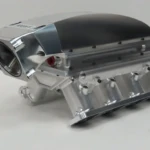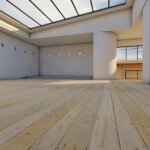Want to breathe new life into your aging CNC mill? A CNC mill rebuild can transform your machining operation, providing greater precision, efficiency and control without the high price of a brand new machine. As a leading provider of five-axis CNC machining services, GreatLight understands the importance of keeping equipment up to date. We see many customers revitalizing their old factories, and we know a thing or two about the retrofit process. This guide will walk you through the key considerations and steps involved in CNC mill rebuilding, ensuring you make informed decisions and get the most out of your investment.
Why retrofit your CNC mill?
before going deeper "how," let us solve "Why." Here are some compelling reasons to consider a CNC mill retrofit:
- Improve accuracy and precision: Older CNC milling machines often suffer from mechanical component wear, resulting in reduced accuracy and repeatability. Retrofitting can replace these worn parts with newer, more accurate replacements, significantly improving the quality of the finished product.
- Improve productivity: Modern CNC controls have faster processing speeds, advanced programming capabilities, and optimized motion control algorithms. These advancements mean shorter cycle times, less setup time, and higher overall productivity.
- Extend machine life: Retrofitting can effectively extend the life of your existing machinery, allowing you to continue using equipment you are already familiar with and may have recouped your initial investment. This may be a more cost-effective option than purchasing a brand new machine.
- Use modern features: New CNC controls often include features such as conversational programming, tool management systems, advanced simulation capabilities and remote monitoring. Retrofitting allows you to use these features without purchasing a new machine.
- Cost savings: Retrofitting is often a more affordable option than buying a new CNC mill. This allows you to allocate funds to other areas of your business, such as expanding your tool inventory or hiring more employees.
- Reduce downtime: Aging control systems are often prone to failure, resulting in costly downtime. Retrofit replaces these unreliable components with newer, more reliable hardware and software, minimizing disruption to production schedules.
- Greater flexibility: Modifications can enhance the versatility of your milling machine, allowing you to handle a wider range of machining tasks and materials. This increased flexibility can open up new opportunities for your business.
Key considerations before you begin
Before starting a CNC mill rebuild, carefully consider the following factors:
- Machine condition: Assess the overall condition of the existing plant. Is the machine structure intact? Are the guide rails and ball screws in good condition? If the core mechanism of the machine is strong, then a retrofit makes sense; otherwise, you’re better off investing in a new machine. Be honest about the wear and tear on your machine. A thorough inspection is crucial.
- Budget: Create a clear budget for your renovation project. This should include the cost of a new control system, servo motors, drives, wiring, installation and training. Get quotes from multiple suppliers to ensure you get a fair price. Don’t forget to factor in potential downtime costs during the retrofit process.
- Control system selection: Choosing the right CNC control system is arguably the most critical decision. Consider factors such as ease of use, programming capabilities, compatibility with existing software, and availability of support and training. Popular choices include Fanuc, Siemens, Heidenhain and Fagor, as well as some more affordable options.
- Servo motors and drives: Upgrading servo motors and drives can significantly improve factory performance. Look for a motor with higher torque and faster response time. Make sure the drive is compatible with the selected control system.
- Wiring and electrical components: Replacing old and fragile wiring is critical to safety and reliability. Consider upgrading other electrical components, such as power supplies and circuit breakers, to ensure they can meet the needs of the new control system.
- Spindle upgrade (optional): Depending on your needs, you may also consider upgrading the spindle. This may involve replacing the spindle motor, bearings, or even the entire spindle assembly. Spindle upgrades can increase spindle speed, power and accuracy.
- Installation and training: Unless you have extensive experience in CNC machine modifications, it’s best to hire a qualified technician or company to handle the installation. Proper installation is critical to ensuring proper system operation. Also, make sure you receive adequate training on your new control system and its capabilities.
- Software compatibility: Verify that your existing CAM software is compatible with the new CNC control. You may need to purchase a new post-processor or upgrade your software to ensure seamless integration.
- Future needs: Consider your future processing requirements. Will the retrofit allow you to handle the types of parts and materials you anticipate using in the future? Consider your growth strategy and make sure the remodel aligns with your long-term goals.
The Remodeling Process: A Step-by-Step Guide
While the specific steps involved in CNC mill rebuilding will vary depending on the machine and components selected, here is a general overview of the process:
- Planning and Preparation: This phase includes defining goals, assessing machine condition, selecting components, and developing a detailed retrofit plan.
- Disassembly: The first step is to carefully disconnect and remove the existing control system, servo motors, drives, wiring and other components.
- Installation of new components: Install new CNC control systems, servo motors, drives, wiring and any other upgraded components. This usually involves installing components, connecting them together, and configuring the system.
- Calibration and testing: After installing new components, it is critical to calibrate the system to ensure accurate positioning and motion control. This may involve using specialized equipment and software to measure and adjust the machine’s performance.
- Software integration: Install and configure necessary software, including CNC control software, CAM software post-processors, and any other related applications.
- train: Receive training from your installation technician or supplier on how to operate your new CNC control system and its capabilities.
- Test and fine-tune: Run test cuts to verify machine accuracy, repeatability, and performance. Make necessary adjustments to optimize the system.
- document: Keep detailed records of the retrofit process, including wiring diagrams, configuration settings, and calibration data. This documentation will be valuable for future maintenance and troubleshooting.
Guoguang perspective
As a professional five-axis CNC machining manufacturer, Honglaite has extensive experience in CNC machine tool capabilities. We regularly advise clients on the feasibility of retrofitting existing plants versus investing in new equipment. We understand that productivity and cost savings can be achieved through well-executed retrofits. When evaluating your options, feel free to contact a machining services expert like us for a consultation. We can help you assess your specific needs and determine the most cost-effective solution for your business. Remember, a successful retrofit can turn an outdated machine into a valuable asset, extending its lifespan and increasing your manufacturing capabilities. As your revitalized facility begins producing parts, we’re ready to assist with any overflow or specialized five-axis needs.
in conclusion
A CNC mill rebuild is a significant investment but can yield huge returns in improved accuracy, increased productivity, and longer machine life. By carefully considering your needs, selecting the right components, and following a well-planned process, you can breathe new life into an aging milling machine and enhance your machining capabilities for years to come. Remember to leverage the expertise of professionals like GreatLight to ensure your remodel is successful and cost-effective.
Frequently Asked Questions (FAQ)
Q: How much does it usually cost to modify a CNC milling machine?
A: The cost of a CNC mill rebuild can vary greatly depending on machine size, components selected, and the complexity of the installation. Generally speaking, you may need to pay 30% to 70% of the cost of a new machine. Obtaining quotes from multiple vendors is critical to getting an accurate estimate.
Q: How long does it take to modify a CNC milling machine?
A: The duration of a remodeling project can range from a few days to a few weeks, depending on the complexity of the project. Proper planning and coordination with the installation technician or company can help minimize downtime.
Q: Can I retrofit a CNC mill myself?
A: While it is possible to perform modifications yourself, it is usually recommended to hire a qualified technician or company. Modification of CNC machine tools requires specialized knowledge and skills, and improper installation may cause problems or even damage to the machine.
Q: What are the benefits of using a modern CNC control system?
A: Modern CNC control systems offer many advantages, including faster processing speeds, advanced programming capabilities, greater accuracy and enhanced user interfaces. They often include features such as conversational programming, tool management systems, and remote monitoring capabilities.
Q: What should I do after the old CNC control system is modified?
A: With older CNC control systems, you have several options. You can sell it, donate it, or scrap it. If the system is still in good working order, selling it is a good option. Donating it to a school or training center is a great way to give back to the community. If the system no longer works, you can choose to scrape it.
Q: What is the service life of a modified CNC milling machine?
A: The service life of a rebuilt CNC mill depends largely on the quality of the rebuild, ongoing maintenance, and the overall original condition of the machine. A well-executed rebuild can extend the life of a machine by many years, often beyond what it would have achieved without the upgrade. Regular maintenance, proper lubrication and timely repairs are critical to maximizing the service life of your machine.
Q: Will modifications increase the value of my CNC mill?
A: Yes, a well-executed CNC mill rebuild can definitely increase the value of your machine. Potential buyers will appreciate the upgraded features, improved accuracy and extended service life.
Q: What common problems are encountered during the transformation of CNC milling machines?
A: Some common issues include compatibility issues between different components, wiring errors, software configuration issues, and mechanical alignment issues. Hiring a qualified technician or company can help minimize the risk of these problems.
Q: What about the machine casing, should it be upgraded during the retrofit?
A: While not always necessary, consider upgrading your machine’s enclosure to meet modern safety standards, improve aesthetics, or reduce noise. This is especially worthwhile if the existing enclosure is damaged or outdated.
Q: Where can I find a reputable CNC mill rebuild company?
A: You can find a reputable CNC mill rebuild company by searching online, asking other machinists for advice, or contacting the CNC machine tool manufacturer. Always check references and reviews before hiring a company.










































